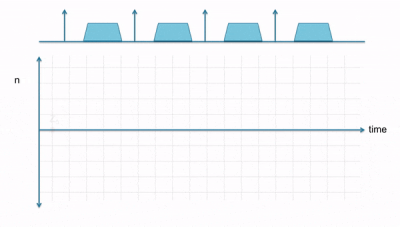Weekend Course
MR Physics & Engineering I: Dances with Spins
Joint Annual Meeting ISMRM-ESMRMB & ISMRT 31st Annual Meeting • 07-12 May 2022 • London, UK

| History & Basic Principles of MRI | |||
| 08:00 | Basic Principles of MRI: A Historical Perspective
TBD
|
||
| 08:30 | Nuclear Spins: From Quantum Mechanics to Classical View
Gonzalo Alvarez
In this talk, I would introduce the basic physics underlying nuclear magnetic resonance. I will present the quantum mechanical description vis-à-vis the classical description of non-interacting spins in static (B0) and time-dependent fields (B1). The spin polarization and its corresponding thermodynamic equilibrium will be introduced based on the density matrix representation. The spin state evolution is dictated by the Liouville–von Neumann equation that gives the laws on how the spin polarization and its coherence evolve as a function of time. This quantum equation of motion arrives at the Bloch equation.
|
||
| Theory of Relaxation | |||
| 09:00 |  |
Semiclassical Theory of Relaxation
Valerij Kiselev
The goal of this lecture is to explain the mechanisms of relaxation caused by the thermal motion of molecules. The focus is on emergence and the role of the correlation functions of random magnetic field. Properties of these functions help understanding the dependence of longitudinal and transverse relaxations on the rate of molecular motion. The difference in these dependencies is the key for explaining several phenomena practically important for NMR and MRI. This lecture relies on the basic notions of analysis, quantum mechanics, statistical physics and Fourier transformation.
|
|
| 09:30 | Interactive Session |
||
| 10:00 | Break & Meet the Teachers |
||
| Bloch Equations | |||
| 10:30 | Basic Bloch Equations
Jana Hutter
The Bloch equations form the basis of MR contrast mechanisms. They provide a classical description of the evolution of the magnetization during any MRI experiment and thus allow to understand how the magnetization evolves under different conditions and influences. This lecture will introduce the Bloch equations and give an overview of different sets of conditions affecting MR experiments. The main types of relaxation are introduced and examples shown.
|
||
| 11:00 | Extensions to the Bloch Equations - chemical exchange
Moritz Zaiss
The extension of the Bloch equations regarding chemical exchange are shown and analyzed. Analytical solutions provide sound insight in the Bloch-McConnell equation system that underlie every exchange-weighted contrast, be it CEST, T1ρ or T2, as well as semisolid magnetization transfer. In this lecture we show that for all experiment affecting the water magnetization, a single eigenvalue solution is able to describe all these experiments. This knowledge forms the basis for interpretation of the outcomes of different exchange-weighted contrasts as well as quantification of exchange.
|
||
| Extended Phase Graphs | |||
| 11:30 |  |
Extended Phase Graphs
Shaihan Malik
This talk will aim to introduce the concept of using phase graphs both as an intuitive analytic tool, and as a method of numerical simulation.
|
|
| 12:00 | Interactive Session | ||
The International Society for Magnetic Resonance in Medicine is accredited by the Accreditation Council for Continuing Medical Education to provide continuing medical education for physicians.